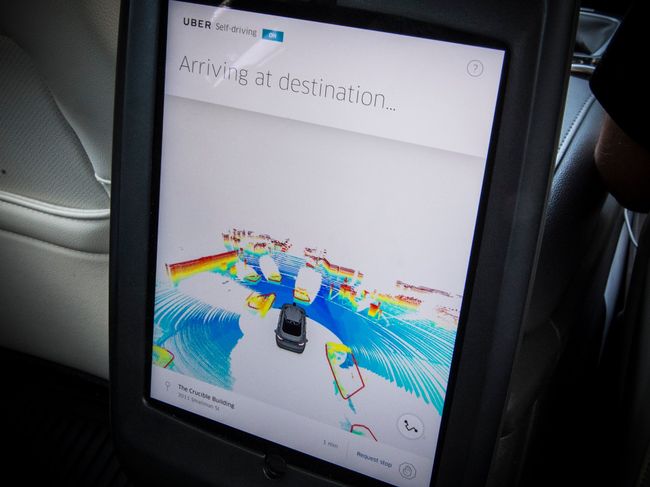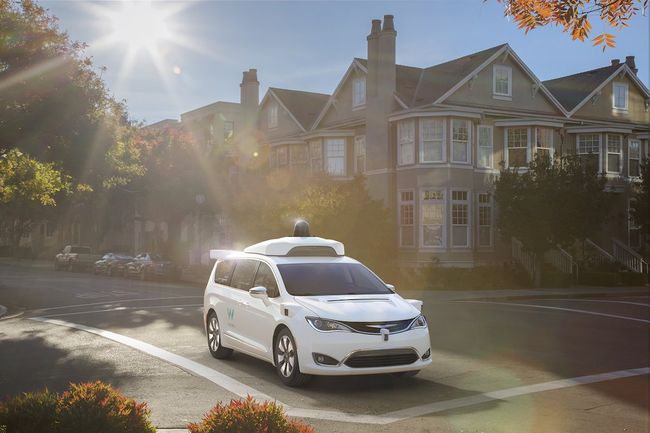肖健雄(人称Professor X),创办了无人驾驶公司AutoX。作为80后计算机视觉领域的学术新星,机器视觉领域著名的科学家。肖健雄本硕就读于香港科技大学,2012年获得世界顶尖计算机视觉大会ECCV最佳学生论文奖和Google Research最佳论文奖,2013年获得麻省理工学院博士学位。他在PhD毕业后直接担任美国普林斯顿大学计算机科学系Tenure Track助理教授,并从零开始创建了普林斯顿计算机视觉与机器人实验室。
在普林斯顿期间的短短三年时间,他发表了三维深度学习的一系列奠基性论文。由于他的杰出学术贡献和世界级影响力, 他两度获得Google Faculty Awards,多次获得Intel Research Awards 和美国国家自然基金委员会研究奖。他的研究成果被广泛应用到自动驾驶和机器人等相关领域。2016年他领导的普林斯顿团队和麻省理工学院联合获得了Amazon Picking Challenge机器人大赛世界第三和第四名。
肖健雄2016年在湖南大学生的一次讲座,介绍了自己在解决计算机视觉与机器人感知之间的鸿沟问题上所做的研究,如从运动信息中恢复三维场景结构、3D目标探测等,并介绍了一个新的领域,即三维深度学习,同时分享了该理念在室内机器人物体检测与定位、即时定位与地图构建等方面的应用。与机器人的自动导航功能相似,肖健雄还介绍了能自我判断、自主导航的自动驾驶技术,并以Google所研发的无人车Google DriverlessCar为例,介绍了自动驾驶技术的核心——雷达辨识、人工智能判断、全车技术等,还展示了一种新的基于深度学习的自动驾驶技术模式,其训练基于驾驶模拟仪器的虚拟图像,与一般的无人驾驶模式不同,该方法直接学习由输入图像到车辆未知和转向的映射。
在肖健雄看来,无人驾驶会是继PC、互联网、智能手机之后的“Next Big Thing”,他认为无人驾驶行业将会有传感器提供商、汽车制造商、计算设备提供商等,而AutoX致力于提供无人驾驶的软件系统,他希望成为AutoX成为无人驾驶时代的操作系统,无人驾驶车的大脑,就像智能手机时代的Android,PC时代的Windows。
肖健雄带领的团队在计算机视觉和无人驾驶领域有深厚积累,他们目前的解决方案覆盖了自动驾驶领域的环境感知、规划以及最后的控制的阶段。AutoX虽然创立不久,但是在技术上取得了一系列的重大突破。他们仅使用摄像头就能实现车辆的自动驾驶,由于无需采用雷达、激光、超声或者特殊的导航设备,所以能够大量降低自动驾驶的实现成本。
总结,AutoX的特点可以用几个关键字表达,三维深度学习(可查看下面链接),计算机视觉。
百度三维计算机视觉技术
参考的国外文章
In the spring of 2016, Dr. Jianxiong Xiao — affectionately known among students and staff as "Professor X" — said goodbye to his plum professorship at Princeton and his post asthe founding director of the school'sComputer Vision and Robotics Labs.
By the fall of that same year, Xiao, known as something of a risk-taker, had moved himself and his family from New Jersey to Silicon Valley, and raised some modest seed funding for his new startup focused on self-driving cars.
His startup, dubbedAutoX, has done its best to stay under the radar to date — apart from afiling with the California DMVto test self-driving vehicles.
The filing officially put the professor's mysterious startup in the company of giants, such as Tesla, Waymo (formerly the Google self-driving car project), Uber, and numerous other big auto companies testing self-driving cars.
But Xiao isn't worried about getting run over by the giants, saying that his small team of academics possesses the kind of expertise in computer vision that big corporations just can't match. Exhibit A: after only six months on the job, Xiao says he's already developed a prototype vehicle that can do the same things as the cars made by his deep-pocketed rivals, at a fraction of the cost.
AutoX gave a first peek at its creation on Friday, with a debut video showing its prototype system in action. The car itself isn't anything special in terms of style (it's basically just a regular2017 Lincoln MKZthat's been rigged with AutoX technology), but it deftly navigates residential streets near San Jose, seeming to handle driving situations such as cloudy days and night-time, historically a challenge for self-driving cars, with ease.
As noted in the video, AutoX's system doesn't rely on the LIDAR laser arrays or other expensive sensors that most self-driving cars, including Waymo's and Uber's, require to function. Instead, AutoX uses advanced artificial intelligence to "see" through cameras mounted on the car and steer the car accordingly.
Better yet, Xiao tells Business Insider that the cameras that power this AutoX prototype were purchased at Best Buy for $50 a pop. "It could not be cheaper than that," he says.
From Xiao's standpoint, that's a crucial point: While future iterations of AutoX technology will support ultrasonic sensors and LIDAR and all that stuff for the sake of enhancing driver safety, the startup is currently focused on building the cheapest and most accessible system for self-driving cars that it possibly can.
While Waymo's self-driving cars sport cameras to "see" around them, they mostly rely on LIDAR laser arrays and other radar sensors to function.Waymo; Business Insider/ Skye Gould
To Xiao, self-driving cars have the potential to benefit society, from cutting down on traffic, to providing more autonomy for the disabled, to making long-distance trucking safer and more efficient. The next step for AutoX is building out a fleet of test cars, so it can test the technology with a variety of different vehicles types.
"Self-driving [cars] shouldn't just be a luxury, but be available to every citizen," Xiao says.
Purely academic
Athoughtful speaker,Xiao says he got the nickname Professor X because some of his peers at Princeton found his actual name "very complicated" (hispersonal web pageincludes a link to hear a sound of how his name is pronounced).
The term for Xiao's specific field of study is "computer vision," a branch of artificial intelligence that's just as applicable to self-driving cars as it is to Snapchat puppy filter selfies.
For Xiao, it's been a long-time area of interest. Over the years, he's won recognition from the likes of Google and Amazon for his and his team's advancements in the field of computer vision. In 2013, Xiao received his PhD from MIT, right before he went to Princeton.
The impetus for going from academia to Silicon Valley was simple, he says: He had long seen self-driving cars as a huge potential market for computer vision. After consulting with his network of computer vision and autonomous driving experts in academia, he decided the time was right to take a big leap and go into business.This readout from an Uber self-driving car shows how it uses a LIDAR laser array to "sense" the world around it. AutoX just uses ordinary cameras in its current form.Uber
It's that academic pedigree that gives AutoX an advantage, Xiao says, as it "enables us to to tap into the academic research network." With artificial intelligence experts in such high demand in Silicon Valley, it helps with recruiting that Xiao and his team already have personal relationships with many of the best and brightest in the field.
"We've known these people in person for many years," Xiao says.
Nowadays, Xiao says, AutoX is about 20 people strong, almost all engineers, with PhD-level computer vision talent that had previously worked at companies like Apple, Magic Leap, and Microsoft.
And with all that brainpower on board, Xiao says that they were able to build their prototype from scratch in only six months, without using anyone's technology. With the Waymo/Uber self-driving car IP lawsuit rocking Silicon Valley, that's a huge plus.
Xiao says the shift from academia to startup has required a subtle change in how he approaches problems. In academia, you tend to flit from one project to the next. At a private company like AutoX, you "actually make things work, actually get things done" in service of one big idea. In this case, self-driving cars.
Driven to success
While Xiao stresses this system is still a prototype, he does say it indicates the way he wants to see AutoX go, with a focus on building real self-driving technology that can handle every situation, versus more limited driver-assist features like Tesla's autopilot, which canonly be engaged on freeways.
AutoX isn't much interested in manufacturing cars and going head-to-head with Tesla, Xiao says. He's equally uninterested in following thecontroversial Comma.aiinto helping people give their existing cars limited self-driving features.
Instead, Xiao says, he's looking to partner up with auto manufacturers for their future vehicles. AutoX provides the core technology, almost like an operating system, that car companies can then take, customize to their exact needs, and use as the basis for their own autonomous systems.
Residential streets can present a challenge for self-driving cars.Waymo
Additionally, Xiao says that AutoX is similarly looking to license out its software to trucking companies, factory operators, and the like.
Xiao also wants to distinguish between AutoX and the technology from companies likeMobileye, which Intel bought for $15 billion this week — Mobileye helps self-driving car "see," sure, but other software has to take its perceptions and translate it into action for the car. AutoX is the whole package, says Xiao.
"We're building the brains for self-driving vehicles," Xiao says.


